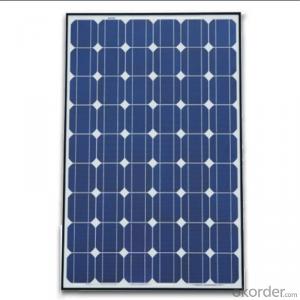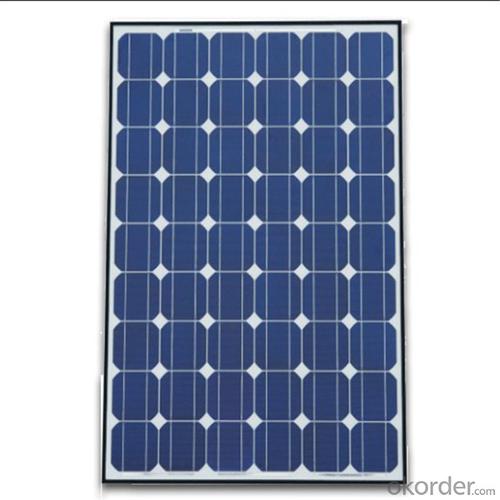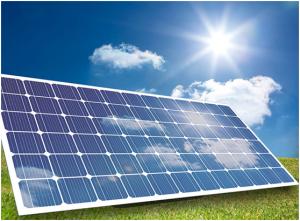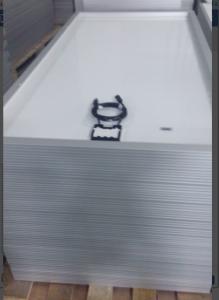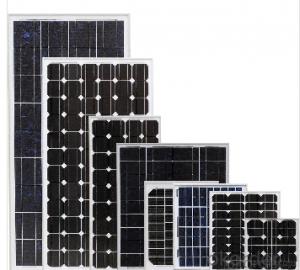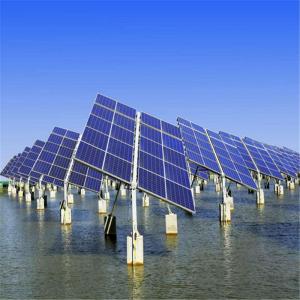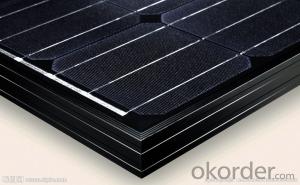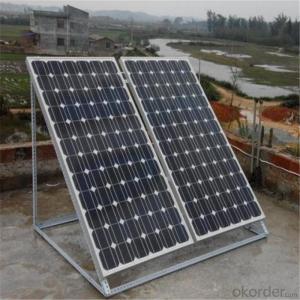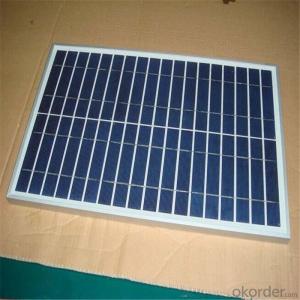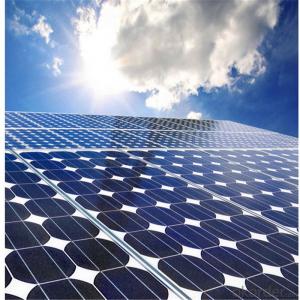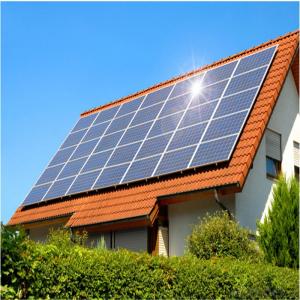230w 72 Cell Vehicle Solar Panels Solar Photovoltaic Module
- Loading Port:
- China main port
- Payment Terms:
- TT OR LC
- Min Order Qty:
- 1000 watt
- Supply Capability:
- 500000 watt/month
OKorder Service Pledge
OKorder Financial Service
You Might Also Like
Specification
Instruction
1) Product name: solar panel / module
2) Solar cell: Mono-crystalline / Poly-crystalline / Amorphous
3) Tempered glass laminated with aluminum frame
4) Life time: 20 - 25 years
5) Temperature co-efficiency: A=+1,46mA B=-79mV, Rp/p=-0.43
6) Power specification at 1kW/m 2, AM 1, 5
7) Output cable: multi contact connectors
8) Construction:
a) Front: High-transmission 32mm tempered glass
b) Back: TPT
c) Encapsulant: EVA
9) Frame: aluminum
10) Certification: CE, TUV
Feature
1. Nominal 18V DC for standard output.
2. Cable connectors for easy installation.
3. Outstanding low-light performance.
4. Splendid aesthetic appearance and easy installation.
5. High efficiency & high stability.
6.Advanced EVA encapsulation system with TPT back sheet to improve product modules
7. Design to meet unique demand of customer.
8.25 year module output warranty.
9. Rugged design to withstands high wind pressure and snow load, easy installation.
10. Designed to comply with rigorous operating conditions, including test.
Images
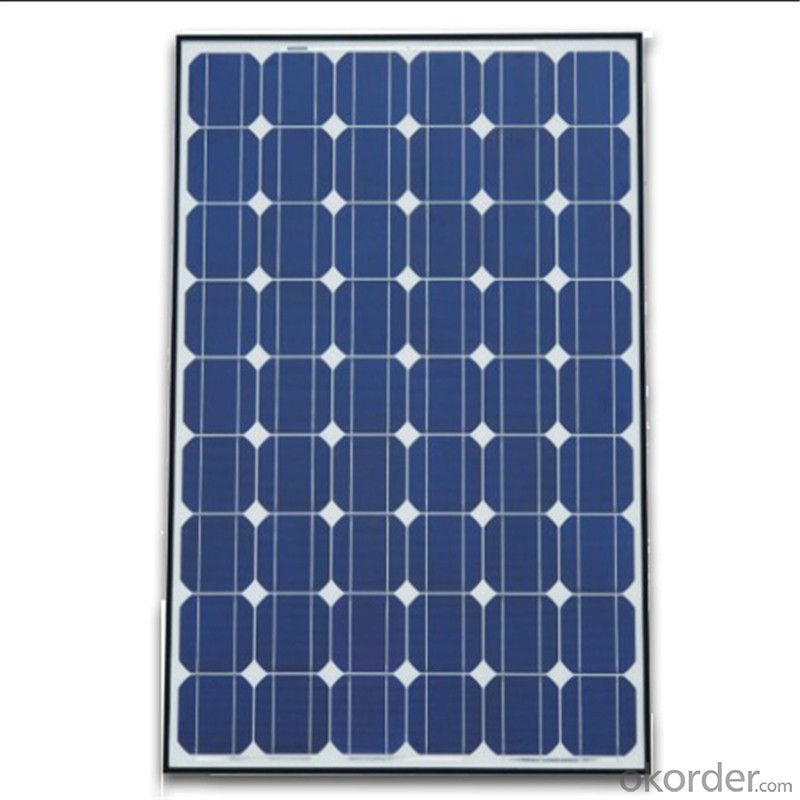
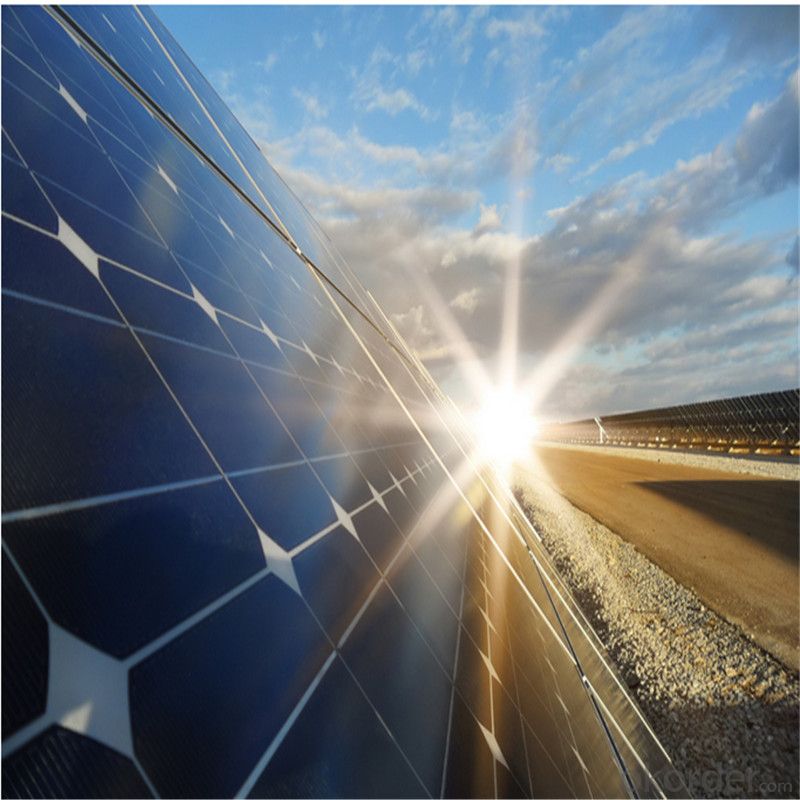
Specification
Dimension (mm) | 1640*992*40 |
NO of Cells and Connections | 60(6x10) |
Weight(kg) | 18.5 |
Tolerance | 0~+5% |
Cell | Polycrystalline Cell 156 x 156 mm |
Operating Temperature | –40 °C to +85°C |
Max System Voltage(VDC) | 1000 |
Packing | 312PCS/20ft(H) Container |
FAQ
We have organized several common questions for our clients,may help you sincerely:
1). What’s price per watt?
A: It’s depends on the quantity, delivery date and payment terms of the order. We can talk further about the detail price issue. Our products is high quality with lower price level.
2). Can you tell me the parameter of your solar panels?
We have different series of cells with different power output, both from c-si to a-si. Please take our specification sheet for your reference.
3). How do you pack your products?
We have rich experience on how to pack the panels to make sure the safety on shipment when it arrives at the destination.
4). How long can we receive the product after purchase?
In the purchase of product within three working days, We will arrange the factory delivery as soon as possible. The perfect time of receiving is related to the state and position of customers. Commonly 7 to 10 working days can be served.
- Q: What size of system would I need to get if I use on average 500 kilowatt hrs a month I would like to do a tie in grid system I live in the states south central area of States any info or links to sites would be wonderful I am interested in this type of energy soure thank you
- Since you are consuming 500 KiloWatts*hours (.5 MegaWatts*hours) per month on average, you need to find out how many KiloWatts per day, so 500 KWh*h / 30 days = 50 KWh per day. With an average of 2 hours of sunlight per day, or even more conservative of 0 hours of sunlight per day 50 KWh / 2 hours = 4.667 KW solar panel system 50 KWh / 0 hours = 5 KW solar panel system An average solar panel is 200W to 250W, so 5 KW / 200W = 25 solar panels 5 KW / 250W = 20 solar panels Solar panels are currently about $ per Watt, so 5 KW of panels is $5,000 A 5KW inverter that is about $5,000 Other incidentals are about $2,000 Total cost (not including labor) is $2,000 Price per KWh is about $0.0 per KWh for East South Central states. Savings per month is *at least* $50 since there are other charges in your electric bill other than usage that are tied directly to your usage as costs. So $50 / month * 2 months = $,800 per year $2,000 investment / $,800 per year = 6.67 years or 6 years, 8 months to pay off the system. Contact many Solar contractors in your area for competitive pricing of labor and for a more detailed analysis of your home.
- Q: How do solar panels impact wildlife?
- Solar panels have minimal impact on wildlife compared to other forms of energy generation. While there may be some concerns about the disruption of habitats during installation, once operational, solar panels do not emit greenhouse gases or pollutants, reducing air and water pollution that can harm wildlife. Additionally, solar panels typically occupy a small fraction of land and can be installed on rooftops or in areas with limited biodiversity, minimizing the impact on wildlife habitats.
- Q: Can solar panels be used for powering an airport or transportation hub?
- Yes, solar panels can be used to power an airport or transportation hub. Many airports and transportation hubs around the world have already started using solar panels to generate renewable energy and reduce their carbon footprint. Solar panels can be installed on rooftops, parking lots, or in open areas surrounding the airport or hub to generate electricity. This clean and sustainable energy source can be used to power various operations, including lighting, heating, cooling, and even charging electric vehicles. Additionally, excess energy generated by solar panels can be stored in batteries for use during low sunlight periods or at night. Overall, solar panels are a viable and eco-friendly option for powering airports and transportation hubs.
- Q: I am doing a science fair project on solar panels, and I need four solar panels to conduct the experiment. I would only need the solar panels for a week. What type of solar panel should I get?
- Your USB power booster may be fragile and is likely expensive, so possibly you should get your 5 volts some other way. 3.7 volts plus a .2 volts D cell is 4.9 volts which is likely close enough for charging most anything with a USB charging cable. If bright sunlight is falling on your solar panel the battery voltage will go to about 5. volts charging at 700 MA, which is also likely acceptable, and will generally be less as part of the 700 ma is being used to charge something else. Also 300 ma may be more typical output of your solar panel even when the sun looks like it is bright. Over charging is unlikely unless the lithium cell has a lower amp-hour = AH rating than the Ni-cad (or nickel metal hydride NiMH 4 AH) D cell, but perhaps you should disconnect the solar panel, if it has been more than one bright sunny day since you charged something with a USB cable. If your battery reads over 5 volts with the solar panel unlighted or disconnected, you are likely to over charge either the lithium cell or the D cell. The PCB protected may complicate adding the D cell (probably not) so you may want to follow your original plan. Your solar panel may send as much as 9 volts to your PCB protection board, when the lithium cell does not need charging: Can the protection board tolerate 9 volts? Probably. If in doubt you can put either a .5 volt or .2 volt rechargeable D cell in series with the solar panel which reduces the input to your PCB protection by about .5 volts. That D cell will over charge, unless you replace it weekly, perhaps oftener. I think your PCB protection prevents over charging and cuts off the load if the lithium cell is discharged to an unsafe level or the load is demanding excessive current. Only the last is a possible problem = one of your USB cords may demand an amount of current that the PCB protection considers excessive. Your USB booster needs about twice as much current as the usb cord is supplying. You don't get the extra voltage by magic. Neil
- Q: how big of an solar panel do i need to power/charge my laptop?would one from canadian tire sell the right one?
- Yes. Basically, here's what you need (I'm keeping this general on purpose): The panels themselves -- how large an area depends on average power consumption and how much power you can get on average. That, in turn , depends on climate. You'd need more in Seattle than Tuscon, for example. I'd guess something in the neighborhod of 0 square feet. Depends also on haow many gadgets (printers, etc.) you have. You'll need a power storage system. Lithium gives you the best poser density (of off-the-shelf stuff) but an ordinary car battery works well and is reliable. And, of course, a control system to manage the power generation/storage/use so everything works together without that annoying smell that tells you you just cooked a few hundred bucks worth of equuipment! :)
- Q: I'm making a model of a solar photovoltaic tower for a school project. I need a way to store energy, and we thought about using capacitors (mainly because of our somewhat limited funding). The tower will have a small photovoltaic panel (around the size of a laptop keyboard with number pad) and some (around 50) quot;heliostats(just the mirrors, no moving parts). What kind of capacitors should i use? and would a capacitor bank be better? i am getting confused with all those uF, pF and can't see the difference.Thanx in advance
- You need a rechargeable battery.Those uF you are talking about are Micro farads and pf are a million times smaller,they are less than gnat-bites compared to any rechargeable battery.You can get metal/metal hydride storage batteries (about .4v)and connect them in series if the voltage you generate is greater than that or in parallel if voltage is lower.Hard to advise without knowing voltage output from your design.As to getting hold of them there are so many in use you are sure to find someone who will lend a few (I would anyway!).
- Q: How do solar panels affect roof aesthetics?
- Solar panels can have both positive and negative impacts on roof aesthetics. On one hand, solar panels can enhance the visual appeal of a roof by adding a modern and eco-friendly element. They can also create a sleek and streamlined look when installed properly. However, some people may find solar panels to be visually intrusive or out of place, especially if they do not blend well with the overall architectural design of the building. Ultimately, the impact on roof aesthetics depends on personal preferences and the design and placement of the solar panels.
- Q: I have a solar panel that puts out 00v, .5 amps in full sun. Before I thought it would charge a 2v battery without a solar charger but then I talked to someone and they said that it was wasting a lot of power and could potentially hurt the battery. A second part to this question is what happens if I put it on a 72v battery without a controller. Thanks!
- yes not good.. why would put 00volts to a 2 volt battery? the best you can hope for is to destoy the battery 3.6v max do not excide max amp on battery
- Q: Can solar panels be installed on remote monitoring systems?
- Yes, solar panels can be installed on remote monitoring systems. Solar panels provide a reliable and sustainable source of power for remote monitoring systems, allowing them to operate efficiently even in areas without access to grid electricity.
- Q: Can solar panels be used for powering a wastewater treatment plant?
- Yes, solar panels can be used to power a wastewater treatment plant. Solar energy is a sustainable and renewable source of power that can be harnessed to generate electricity for various applications, including wastewater treatment. By installing solar panels, the plant can reduce its reliance on conventional electricity sources and lower its carbon footprint. However, the feasibility of using solar panels for powering a wastewater treatment plant may depend on factors such as the plant's energy requirements, available space for solar panel installation, and local climate conditions.
Send your message to us
230w 72 Cell Vehicle Solar Panels Solar Photovoltaic Module
- Loading Port:
- China main port
- Payment Terms:
- TT OR LC
- Min Order Qty:
- 1000 watt
- Supply Capability:
- 500000 watt/month
OKorder Service Pledge
OKorder Financial Service
Similar products
Hot products
Hot Searches
Related keywords
